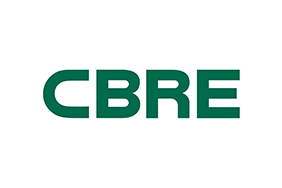Momentum Growing for Use of Building Performance Standards To Support Commercial Real Estate Decarbonization
CBRE analyzes financial impact and upsides of regulations aimed at reducing buildings’ carbon emissions, identifies actions to aid compliance
Published 01-17-24
Submitted by CBRE Group, Inc.

By Sara Johnston Director, Mktg & Comm
A growing number of local U.S. jurisdictions are implementing building performance standards (BPS) to combat carbon emissions in the real estate sector, creating new financial and reputational considerations for building owners, according to a new report by CBRE.
Ten local jurisdictions across the U.S. launched BPS policies in 2023, including cities, counties and states. New Jersey joined California and Colorado in enacting a statewide policy in 2023 with Maryland, Massachusetts, Minnesota and Washington scheduled to do the same over the next three years.
The regulations are aimed at reducing buildings’ greenhouse gas (GHG) emissions. The stipulations vary by jurisdiction with many imposing financial penalties for policy violations. CBRE’s Econometric Advisors analyzed the potential financial impact for a 500,000 sq. ft. office building that failed to meet energy- or emissions-reduction mandates in cities with active BPS policies. The analysis found non-compliance could reduce a building’s net operating income (NOI) by 5.1 to 5.8%.
“The financial penalties associated with BPS regulations could be significant for building owners, but collecting fines is not the goal. The policies are designed to incentivize investing in the improvements needed to reduce a property’s carbon impact. Those investments also have an upside in protecting a building’s reputation and helping to attract tenants. As regulations become more widespread, a strategic approach to sustainability will become a prerequisite for any major capital investment,” said Dennis Schoenmaker, executive director and principal economist, CBRE Econometric Advisors.
Actions to aid compliance
Improving a building’s energy efficiency and overall performance requires the cooperation of building owners and tenants. While the building owner is liable for financial penalties, how tenants operate their individual spaces significantly impacts a building’s ability to meet performance targets. Two actions to aid cooperation and compliance are green lease clauses and submetering.
Green lease clauses outline specific obligations and commitments related to sustainability measures like energy efficiency, renewable power procurement, water consumption, waste management and more. Such clauses can feature cost-sharing measures to help distribute building improvement costs among tenants and the owner, as well as stipulations to track and reward tenants who reduce their energy usage.
Submetering is the process of measuring and monitoring individual tenants’ energy consumption and billing them accordingly. It can also be applied to large electrical equipment, such as HVAC, lighting and building automation systems. The use of submetering provides more accurate data, allowing a building owner and its property management team to focus on areas with the highest impact. Research has shown the use of submetering in multi-tenant buildings can lead to an energy savings of up to 15% (U.S. General Services Administration).
“Momentum is growing for more BPS implementation. Building owners operating across multiple markets are facing tremendous amounts of complexity in navigating the various regulations. The good news is the solutions to help simplify the complexity and accelerate decarbonization are advancing every day, as does the industry’s understanding of the urgent need to act. Owners and tenants are becoming more aligned on the importance of sustainability, and this shared responsibility will be key to driving progress,” said Rob Bernard, chief sustainability officer, CBRE.
View the full report here.
About CBRE Group, Inc.
CBRE Group, Inc. (NYSE:CBRE), a Fortune 500 and S&P 500 company headquartered in Dallas, is the world’s largest commercial real estate services and investment firm (based on 2022 revenue). The company has approximately 115,000 employees (excluding Turner & Townsend employees) serving clients in more than 100 countries. CBRE serves a diverse range of clients with an integrated suite of services, including facilities, transaction and project management; property management; investment management; appraisal and valuation; property leasing; strategic consulting; property sales; mortgage services and development services. Please visit our website at www.cbre.com.

CBRE Group, Inc.
CBRE Group, Inc.
CBRE Group, Inc. (NYSE:CBG), a Fortune 500 and S&P 500 company headquartered in Los Angeles, is the world’s largest commercial real estate services and investment firm (in terms of 2013 revenue). The Company has approximately 44,000 employees (excluding affiliates), and serves real estate owners, investors and occupiers through approximately 350 offices (excluding affiliates) worldwide. CBRE offers strategic advice and execution for property sales and leasing; corporate services; property, facilities and project management; mortgage banking; appraisal and valuation; development services; investment management; and research and consulting. Please visit our website at www.cbre.com.
More from CBRE Group, Inc.

